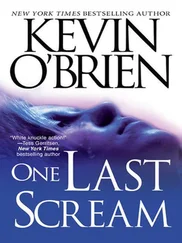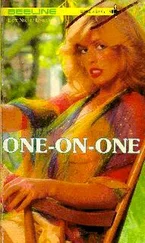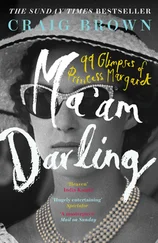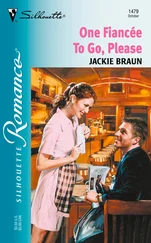The only subject on which the two of them achieve a measure of agreement concerns the burial customs of the United States. Stravinsky is impressed by Waugh’s knowledge. Waugh claims that he himself has ‘arranged to be buried at sea’, though this, it turns out, is just another of his little teases.
IS APPALLED BY
Burbank Studios, Los Angeles
December 1939
Igor Stravinsky is himself not the easiest of folk, but Walt Disney is not to know this when the composer drops round to his studio.
Disney is at the height of his success. Mickey Mouse and Donald Duck are the most durable and biddable stars Hollywood will ever know, and his recent Snow White and the Seven Dwarfs will gross $8 million. He has just built himself a palatial studio in Burbank, the size of a modest town, complete with its own streets, electric system and telephone exchange.
Meeting Leopold Stokowski, the conductor of the Philadelphia Orchestra, at a dinner party, Disney mentions an idea he has had for a two-reel version of Dukas’s The Sorcerer’s Apprentice, starring Mickey Mouse. Stokowski grows tremendously excited at the idea of animating great works of music. He suggests other pieces Disney might transform into colour: Bach’s Organ Toccata in D-minor, for instance. Disney sees it as orange. ‘Oh, no, I see it as purple,’ counters Stokowski.
Disney’s modest idea balloons into a full-length film, with classical music galore. Both men become over-excited: no idea seems too preposterous. Stokowski suggests a Debussy prelude, ‘Les Sons et les parfums tournent l’air du soir’, explaining that he has always craved perfume in theatres. Disney goes overboard for it. ‘You’ve got something!’ he says. ‘You could get them to name a special perfume for this – create a perfume – you could get write-ups in the papers! It’s a hot idea!’
Disney wants a sequence showing the creation of the world, full of volcanoes and dinosaurs. But what music to use? His researchers can only come up with Haydn’s Creation, but Disney thinks it doesn’t carry quite enough oomph. At this point, Stokowski alerts him to Le Sacre du printemps by Igor Stravinsky. *Disney listens to it, and is immediately gripped. He offers Stravinsky $5,000 for the rights, though Stravinsky will remember it as $10,000. According to Stravinsky, Disney hints that if permission is withheld he will use the music anyway: pre-Revolutionary Russian copyrights are no longer valid.
Stravinsky accepts; Disney steams ahead. Before long the human inhabitants of the Burbank studio find themselves working alongside animals in cages, including iguanas and baby alligators, with skilled animators studying their movements close-up. ‘It should look as though the studio has sent an expedition back to the earth six million years ago,’ enthuses Disney. He is so excited that he starts free-associating to the music: ‘Something like that last WHAHUMMPH I feel is a volcano – yet it’s on land. I get that UGHHWAHUMMPH! on land, but we can look out on the water before this and see water spouts.’ As he listens to the music, he gets so worked up that he suddenly blurts, ‘Stravinsky will say: “Jesus, I didn’t know I wrote that music!”’
Which, as it turns out, is roughly what Stravinsky does say. In December 1939, he drops into the Burbank studio for a private screening of Fantasia. The experience leaves him with the most awful memories. ‘I remember someone offering me a score, and when I said I had my own, that someone saying, “But it is all changed.” It was indeed. The instrumentation had been improved by such stunts as having the horns play their glissandi an octave higher in the Danse de la terre. The order of pieces had been shuffled, too, and the most difficult of them eliminated, though this did not save the musical performance, which was execrable.’
As Stravinsky remembers it, Disney tries to reassure him by saying, ‘Think of the number of people who will now be able to hear your music.’ To which Stravinsky replies, ‘The numbers of people who consume music … is of no interest to me. The mass adds nothing to art.’
But Disney’s memories of the meeting are quite different. Stravinsky, he maintains, made an earlier visit to the studio, saw the original sketches for the Fantasia version of Le Sacre and declared how excited he was. Later, having seen the finished product, Stravinsky emerged from the projection room ‘visibly moved’. Disney remembers the composer saying that prehistoric life was what he always had in mind when he wrote it. But Stravinsky disagrees. ‘That I could have expressed approbation over the treatment of my own music seems to me highly improbable – though, of course, I should hope I was polite.’
Either way, he is much less polite twenty years later, when he and Disney clash in the pages of the New York Times. He dislikes what was done to his music, he writes, and furthermore, ‘I will say nothing about the visual complement as I do not wish to criticise unresisting imbecility.’
Whose memory are we to trust? There may be a temptation to favour the highbrow over the lowbrow, the intellectual over the populist; but self-delusion rains on all, high and low. Many artists who took money from Hollywood felt able to absolve themselves by seeking a divorce from the finished product. For them, the prevailing myth of the philistine Hollywood producer offered a welcome escape hatch.
By and large, the evidence favours Disney. Less than a year after their supposed contretemps, Stravinsky cheerfully sells Disney two more options – one on the musical folk tale Renard, the other on The Firebird. *And his artistic halo always has a certain rubbery quality about it: he composes some hunting music for Orson Welles’s Jane Eyre, and after contractual negotiations break down, uses the very same piece for a commission from the Boston Symphony Orchestra, transforming it into an ode to the memory of the wife of Serge Koussevitzky. On another occasion, he lifts the incidental music he has been commissioned to write for a film about the Nazi occupation of Norway, Commandos Strike at Dawn, straight from a collection of Norwegian folk tunes his wife has stumbled upon in a second-hand bookstore in Los Angeles. When this deal falls through, he further rejigs it into a piece for the Boston Symphony Orchestra, solemnly retitling it ‘Four Norwegian Moods’.
RESISTS
Grauman’s Chinese Theatre, Los Angeles
August 27th 1964
It is all smiles as Walt Disney and his most recent collaborator, P.L. Travers, pose with Julie Andrews at the world premiere of Mary Poppins. This, he tells reporters, is the movie he has been dreaming of making ever since 1944, when he first heard his wife and children laughing at a book and asked them what it was. At his side, Travers, aged sixty-five, appears equally thrilled. ‘It’s a splendid film and very well cast!’ she enthuses.
The premiere is a lavish affair. A miniature train rolls down Hollywood Boulevard with Mickey Mouse, Snow White and the Seven Dwarfs, Peter Pan, Peter Rabbit, the Three Little Pigs, the Big Bad Wolf, Pluto, a skunk and four dancing penguins on board. At the cinema, the Disneyland staff are dressed as English bobbies; at the party afterwards, grinning chimney-sweeps frolic to music from a band of Pearly Kings and Queens.
The next day, Travers is over the moon, wiring her congratulations to ‘Dear Walt’. The film is, she says, ‘a splendid spectacle … true to the spirit of Mary Poppins’. Disney’s response is a little more guarded. He is happy to have her reactions, he says, and appreciates her taking the time, but what a pity that ‘the hectic activities before, during and after the premiere’ prevented them from seeing more of each other.
Читать дальше












